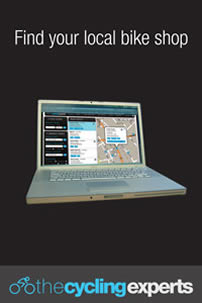Cycle use storms ahead
04/07/2008 NewsThe statistics, compiled in The National Cycle Network Route User Monitoring Report to end of 2007, show that an increasing number are turning to “alternative forms of getting around,” says Sustrans.
Over 354 million trips were made on the Network in 2007, an increase of 4.7 per cent on the previous year.
Those trips, which are equally split between walkers and cyclists, represent massive savings in petrol bills, says Sustrans. If all the journeys on the Network had been made by car the petrol would have cost £269 million (based on June ’08 prices). The potential carbon dioxide saving of 450,000 tonnes of CO2 is the equivalent of taking almost 200,000 cars off the road, around 8 per cent of new cars sold in 2007.
With more and more people finding it increasingly expensive to maintain and run a car (amongst the poorest fifth of households who do own cars spend nearly a quarter of their income on the cost of motoring) the National Cycle Network is getting people around – 14 per cent of all journeys were made by people without access to a car.
Malcolm Shepherd, Sustrans CEO said: “Despite 2007′s wet summer this is the eighth year in succession that usage has risen and with around one in ten cyclists on the Network being new or returning to cycling it shows that the UK’s appetite for healthy, environmentally responsible travel is increasing. We are delighted that people are using the routes for all sorts of reasons, from taking the children to school, to getting to work, to enjoying their leisure time.
“The Network is a crucial part of the UK transport system, during 2007 it carried nearly a third of the journeys made on our well-funded rail network. Yet, other than in Scotland, Sustrans receives no direct funding from central government transport departments for the Network. As obesity spirals out of control and greenhouse gas emissions from transport continue to rise we urgently need to move towards a sustainable transport system. And we will only be able to do that when tried and tested solutions that provide the right environment for walking and cycling – like the National Cycle Network – become integral to transport policy and are funded accordingly.”




